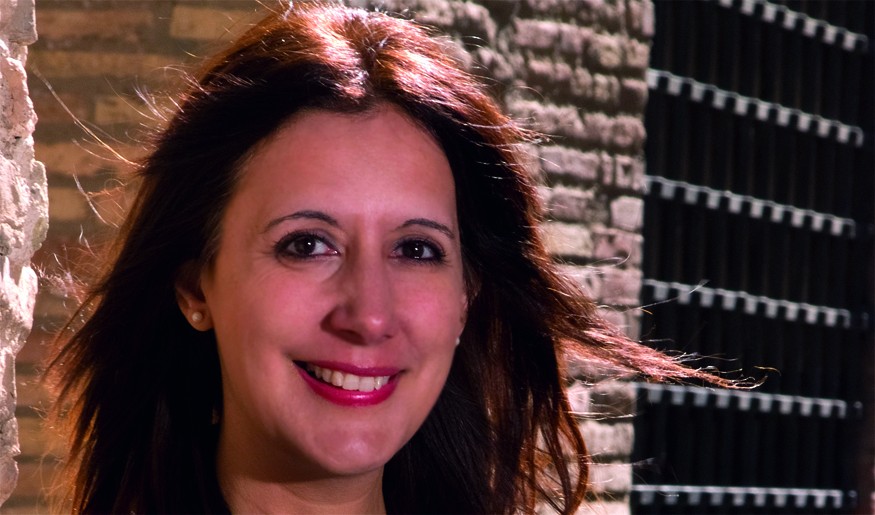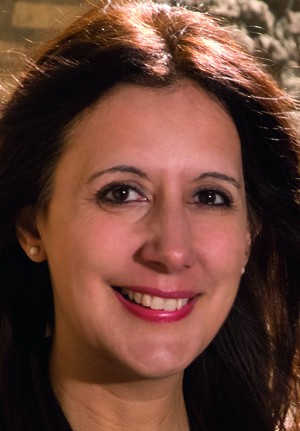
Dolores Redondo has had an amazing few years as a bestselling crime fiction author across Europe and beyond. Her Baztan trilogy, set in Northeast Spain – in Basque country – has been very well received and translated into 20 languages. The first in the series, The Invisible Guardian, appeared in English last year and it’s as dark, suspenseful and textured as you could want. We couldn’t resist the opportunity to ask the author some questions about her work.
Tell us a little bit about The Invisible Guardian and the Baztan Trilogy. Did you intend it as a trilogy from the outset?
Yes, I did. The story is based on a ritual crime that happened several years ago in a place close to where the trilogy is set, and explores the power of memories. Detective Salazar is a woman who has to return to the town where she was born to direct an investigation into a serial killer of teenagers. The nature of the crimes, and coming back to the town, reawaken dark secrets from the past – these secrets are discovered by the reader throughout the three novels while Amaia Salazar tracks down a killer with motivations far more complex than they at first seem.
The setting plays such an important part in the book. Why did you choose this location?
It’s a very interesting place to set a novel. It’s in the Pyrenees, on the border with France, and very close to the Basque Country, where I am from. It’s one of the places with the most magical tradition in Europe, where most of the persecution of witchcraft during the Spanish Inquisition took place, and many people were burnt as witches. Legends still have a lot of strength in this area, and the culture is fascinating.
You give readers a great insight into female strength and solidarity through your characters. Can we expect to see more of that in the next books in the trilogy?
This concept of a matriarchal family, in which women have such an important role, is very much alive and well in the region. Men have traditionally been sailors, so women were the ones who took care of the local businesses, farms, harvests… creating very strong clans. Of course this also leads to conflict. and In the three novels I explore these intriguing family relationships, very similar to my own family.
What other writers inspire you, crime or other genres?
I am a huge fan of PD James, Agatha Christie and Ruth Rendell, but also of Dickens, Juan Rulfo, Ernesto Sabado and Juan Benet.
How much research goes into your books?
I do a lot of research mainly on the technical issues, everything that has to do with how the police work, and also on the historical part of the novels. However, I really believe in instinctive writing, I don’t like a novel that sounds like a technical manual. I prefer description, filtered by my own personal point of view, how I see the world.
Do you have a writing routine?
Of course I have a routine. I would love to write during the night and sleep the whole morning, but I am a mother and a wife, and if I want to spend time with my family I have to live by their schedules. I normally work during the hours when my children are at school, except when I am about to finish a novel, when I only live for writing. When I reach the last 100 pages or so, I just write, write and write, until I reach the end. Then I celebrate with my family!
What are you currently working on, now that you have completed the trilogy?
Something wonderful has happened: my readers want more investigations lead by Amaia Salazar! That’s great, because I also want to write more novels with her as a heroine. But now that the trilogy has concluded, I felt I needed to take some time and tell another story that has been in my head for a long time, which I also feel the urge to tell. It’s crime fiction as well, but I am telling it from another perspective. But fear not, I have already started to do some research for Amaia Salazar’s next case…
Read our review of The Invisible Guardian here. The subsequent books Legacy of the Bones and Offering to the Storm will be released in August 2016 and 2017 respectively. Author photo by Alfredo Tupelo.
